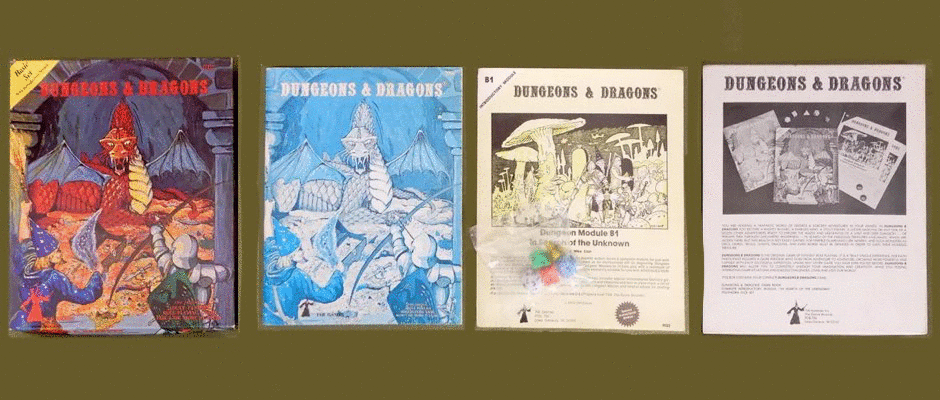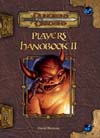My initial reaction to this book was the usual, “Why in the world do we need another sourcebook, let alone an additional Players Handbook?!” Doubts were put aside with the first online preview, it showed promise, namely the section on how to rebuild a character (more on that later) and new feats which build upon the existing ones from the core rules in PHB. My continued skepticism (and mantra on this site) still remained with the introduction of four new “core” classes, more spells and other supplemental materials. Those are not things D&D needs. There are plenty of options. WOTC need to re-focus on assisting, inspiring and keep people playing the game. More rules will not achieve such a goal. In my experience it upsets enough gamers to a breaking point before they start abandoning the game. However, such a fate is unlikely with the number one RPG but the numbers could decline enough to make WOTC rethink and reset the goal posts.
Fortunately my friend Jeremy received the new PHB II as a birthday present so I received a more thorough scan of its contents before dropping down the $35. Sadly (in some way), I liked it enough to run out to the closest Dragon’s Lair for it the same evening. Here’s how the book breaks down.
- Classes: The book scores a lousy one for four with me and even the one I like has some reservations. My players aren’t shocked since I’m not too keen on the non-Japanese classes from the Complete series. I’ll start with the three that don’t work for me; Beguiler, Dragon Shaman and Duskblade. They’re just variations of class combinations players can make through the core rulebooks already. Beguilers: Wizard/Rogue with emphasis on Enchantment magic and Charisma-based skills; Dragon Shaman: scaled-back version of Half-Dragon race with Dragon Disciple elements; Duskblade: Fighter/Wizard fused together into one class with the Fighter’s BAB but the arcane magic capability capped at 5th-level spells. One could use similar arguments against the Knight class because it’s more of a counterweight to the Barbarian; Lawful alignment, certain class abilities and its overall mindset. My immediate reservation with letting any player having a Knight PC is the Fighting Challenge ability which is more of a liability and will get many low-level Knights killed unless their allies are generous with Healing magic. At least there is a class available to me to make more martial Aristocrats and prove that Paladins are not bound to a code of conduct in combat like these guys are.
- Expanded Classes: Mainly variations on character class features fromPHB and some of the non-Asian Complete. For example, instead of giving Neutral-aligned Clerics the ability to spontaneously castcure/inflict spells, change it to Domain spells. Makes more sense with Clerics of Boccob, Olidammara, Fharlanghn and Obad-Hai. These tradeouts would have to be allowed on a case-by-case basis in my campaign.
- New Feats: Most of these build upon the Feats of the core rules. Players won’t find much here when making new characters, just excitement at what they could attain when their PCs reach higher levels.
- New Spells: This is a mixed bag just like spells introduced by all the other books. Most of them aren’t campaign busters from my initial impression. In my campaign, they’ll probably be introduced bit by bit like I’m doing with Spell Compendium. The book adds even more to the quagmire of Polymorph as a school too.
- Building Your Idenity: Rather pricey advice on how to flesh out your PC for new players of D&D. However, I skimmed it because it did hold some nice suggestions that even this vet of 25 years liked.
- The Adventuring Group: At first this seems like more pricey advice, namely on how to bring together a group of PCs without the “you meet in a tavern” beginning or what to do if you have a fifth player (I have no idea how a team of PCs could survive any decent module with just four PCs). This chapter redeems itself in the last third by laying out beneficial synergies the PCs can do with some practice, leadership and cooperation. e.g. Camp Routine: One character has 12 ranks of Survival or the Self-Sufficient Feat and everyone else must have 1 rank of Survival. In short, the party will gain defense bonuses on their watches after they perfect this routine.
- Affiliations: How to make your own Knights of the Round Table or make a Thieves Guild that’s more than just a generic organization every large town has. Affiliations go beyond a name with members. The affiliations have ranks which lead to standings. These standings grant the characters titles, skill bonuses, stat increases, so on. Numerous example affiliations are included. Definitely saves the DM some time.
- Rebuilding Your Character: One of the biggest gripes I receive from a former D&D player involves Prestige Classes. His complaint boils down to the pre-requisites (Feats and skills namely). So when the PC is created at first level, the next 10 levels must be planned out or else there’s a delay to get it. Not a problem anymore. Now there are rules/guidelines for your PC to be retrained at certain skills, Feats and with some classes Spells, Class Features and Substitution Levels (something from the Race series). It’s not an instantaneous matter. There’s an expediture of campaign time and gold plus some retraining requires an instructor. Sometimes there may be a quest involved too, especially if Substitution Levels or even changing Race is the objective.
- Appendix: Tables, tables and tables of short cuts to whip together quick PC/NPCs. This is more helpful to DMs than players with decent imaginations.
Phew! I really tried to be succinct here and obviously I failed. I did want to be thorough. This is a sourcebook WOTC is going to market at all the players unlike DMG II. There’s nothing more discouraging to a DM than being caught offguard by a player bombarding the game with new rules, options and spells. Slows down the game, destroys enemies faster than planned and could throw the whole campaign into disorder.
There is one big warning I have to give. This book assumes the usage of the new Swift and Immediate Action rules from the Miniatures Handbook andExpanded Psionics Handbook respectively. For me, those two categories of Actions are needless hairsplitting between Free and Standard Actions. I refuse to use them since I find them unnecessary (besides, Psionics belong in SciFi, not Fantasy). Here’s how I would get around them.
- A Knight needs to be adjacent to an ally in order to use the Shield Ally ability. I would just make the player declare whether or not the ability is in use during his or her turn. An Action doesn’t need to be expended to use or declare Dodge, why should it with Shield Ally.
- The Spell Alter Fortune has the casting time of an Immediate Action. There’s two ways to go here. When in a roleplaying/non-combat/rounds situation, counting Actions doesn’t always come into play. If it’s going to be cast during combat with rounds and initiative being counted off, the player will have to set it up as Readying an Action and then its casting becomes a Standard Action. Maybe that Spell is a poor example, it has a 200 XP cost yet I made my point against needing to make up another category of Action.
Finally, there was a web-enhancement posted that I felt WOTC should’ve included in the book. How to transfer the XP costs of magical items. My friend Flynn said another publisher had rules for this before in a PDF. Well now your stingy-with-their-XP players have a way to spread the XP expenses of making magic swords for the party’s warriors. Same goes for NPCS, namely Priests of Boccob from my campaign.
The Bottom Line: The positive things this book brings to the game do outweigh its negatives. It’s just the $35 pricetag for 224 pages is hefty when I could only endorse less than half of its contents. Yet that half is pretty useful. So I would purchase this book under a compromise. Put it in the ‘maybe’ pile when there are more pressing or desirable choices. Also consider it more of aDMG III so the DM could integrate its elements gradually. Should what the DM introduced work out, then others in the gaming group could buy it. Until then, there’s no rush, PHB isn’t broken.

